If you want to migrate Windows 7 from HDD to SSD for better performance , Installing an SSD as the system disk is a quick way to upgrade your Windows 7 computer and improve performance Undoubtedly, migrating OS from one driver to another is quite a complex task. It is much different from copying personal data. However, the best migration tool can help make this process hassle-free for you. In this article, we will discuss everything you need to know about migrating Windows 7 from the HDD to SSD. Read on to find out more!
Part 1: Does Windows 7 Support SSD Hard Drives?
Part 2: Why Transfer Windows 7 To SSD?
Part 3: Easier and Safer Way To Migrate Windows 7 to SSD
Part 4: Part 4: FAQs About Migrate Windows 7 to SSD
- Q1: Do I need to format SSD before installing Windows 7?
- Q2: Why SSD Is Not Recognized by Windows 7?
- Q3: How do I move Windows 7 to an SSD without reinstalling?
Conclusion
Part 1. Does Windows 7 Support SSD Hard Drives?
No doubt, The operating system that many users prefer to be successful and stable is Windows 7, so even though Windows 11 has been released for some time now, there are still many people using it. But as time goes by, Windows 7 system partition tends to have less space and the OS becomes slower over time, so most Windows 7 users are planning to upgrade their old hard drive to a bigger one or a faster solid state drive. Normally Windows 7 does not load drivers for unused storage systems, so if you change from SATA to AHCI, it will not load Msahci. Once the setup is complete, you can now install Windows 7 on the SSD as usual.
Part 2. Why Transfer Windows 7 To SSD?
Wondering why transfer OS to SSD Windows 7? A solid-state drive (SSD) is based on flash memory chips rather than rotating magnetic disks. This design mechanism of SSDs gives them the main advantage over traditional drives. As a result, SSDs can read and write data much faster than HDDs. Indeed, such a fast hard drive can enhance the performance of your PC.
Here are a few reasons why users need to migrate hard drive to SSD Windows 7:
- Faster Read and Write
- Quick PC Boot Up
- Responsive Software Programs
As discussed above, SSDs work at a much higher speed than HDDs. This makes them very popular nowadays. Traditional hard drives work with a mechanism of rotating magnetic disks. On the other hand, solid-state drives tend to store data in microchips, which involves less mechanical involvement. For this reason, these drives can read and write much faster.
This is another main advantage of solid-state drives. Such a drive can ensure your PC will boot up quickly. So, you will no longer wait anymore for your computer to boot up. A solid-state drive has non-volatile NAND-based flash memory, which makes booting quick.
When you migrate to SSD Windows 7, it makes software programs more responsive. SSD’s data management process only involves embedded chips to perform operations. For that reason, applications tend to be more responsive due to fast read/write operations performed by SSD.
In addition to the above-mention reasons, solid-state drives integrate materials and components that can support storing information for longer. Other than that, these drives have the highest durability as compared to HDDs. As a result, they can last even more than 200 years without losing data integrity. So, replacing HDD with SDD Windows 7 offers you many benefits.
Part 3. Easier and Safer Way To Migrate Windows 7 to SSD
Way 1: With PassFab 4EasyPartition
Are you looking for the best way to migrate Windows 7 to SSD? Indeed, PassFab 4EasyPartition is a top-ranked tool to migrate Windows 7 to your SSD. It allows the users to perform migration in just a few clicks.
Let's find out the steps to use this amazing tool:
Connect To A New Disk
- Connect Your Computer: Firstly, you need to connect your computer to a new disk (SSD) you want to migrate to.
- Install a New Hard Drive: If you have a PC with multiple slots, make sure to install a new hard drive before using PassFab 4EasyPartition.
Perform System Migration
-
Launch App: To perform the migration, download and install PassFab 4EasyPartition on your computer and then click on the "Start" button.
- Select the source and target disk: In this step, you will need to choose the source and target disk. The source disk is the one you want to migrate from (HDD) and the target disk is the one you want to migrate to (SDD).
- A pop-up will appear: After selecting your disks, a new pop-up will appear. Make sure to hit the “Sure” button to proceed.
- Click Start: Before clicking on the “Start” option, you need to check the information of the source and target disk.
- Click Finish: It will take a few minutes to migrate hard drive to SSD without reinstall. Once completed, click the “Finish” button to complete the migration.
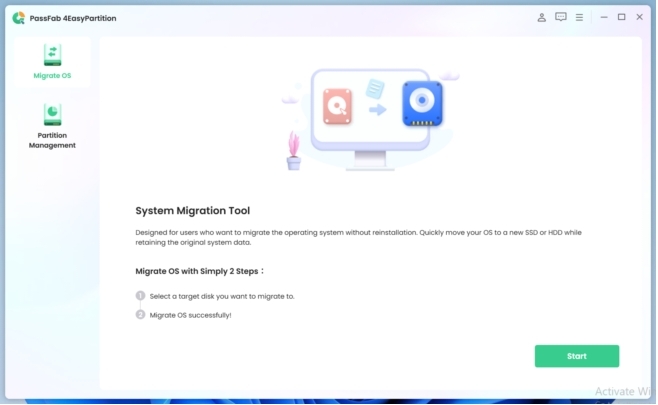
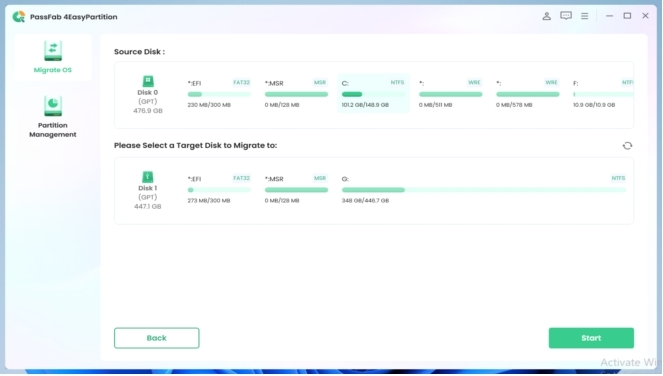
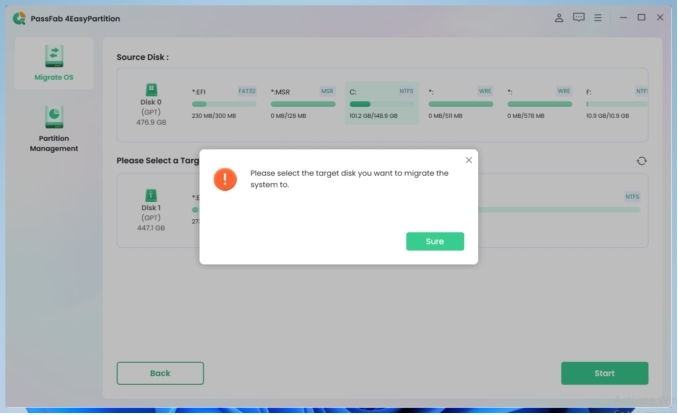
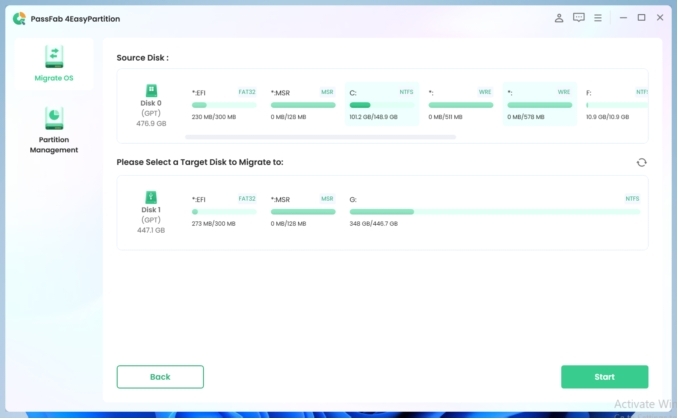
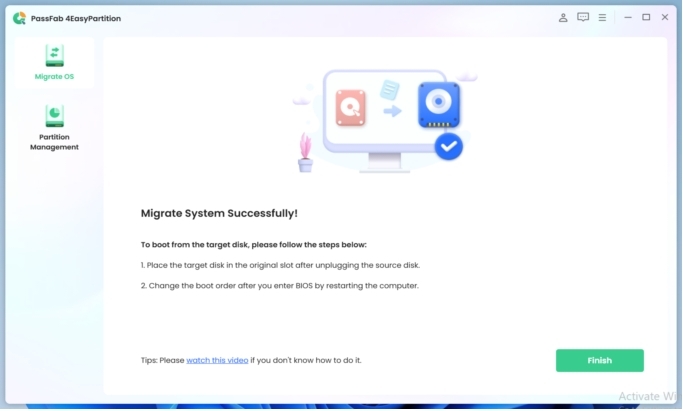
Way 2: With Windows 7 Own Tool
Undoubtedly, Windows 7 is not as quick as Windows 10. But, you can make it quicker by moving Windows 7 to new drive. If you are afraid of data loss, Windows 7 comes with its own tool to help you with OS migration. Here are some steps to migrate Windows 7 to SSD:
- Firstly, you will need to create a backup using Windows’s Backup Tool.
- After creating a backup, make sure to download Windows 7 USB/DVD tool. Also, you need to download ISO files.
- Launch an app and tap on the Browse button to find Windows 7 ISO files
- Start copying files after choosing USB as your media type
- Replace the HDD with a solid-state drive (SSD). Also, connect the bootable USB to your PC.
- Choose Repair Your Computer when the Windows 7 install menu appears.
- Select Restore your computer using a system image and hit the Next button.
- In this step, make sure to check the "Use the latest available system image" option. After that, click the Next button. Lastly, you will need to switch the boot order.
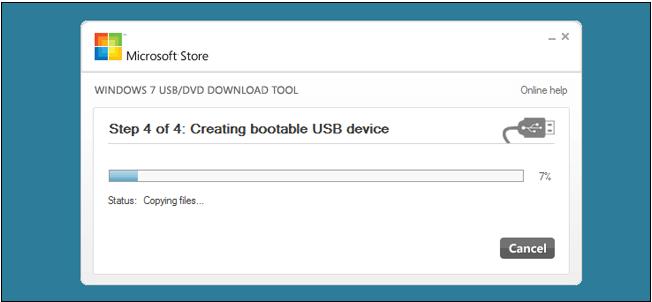
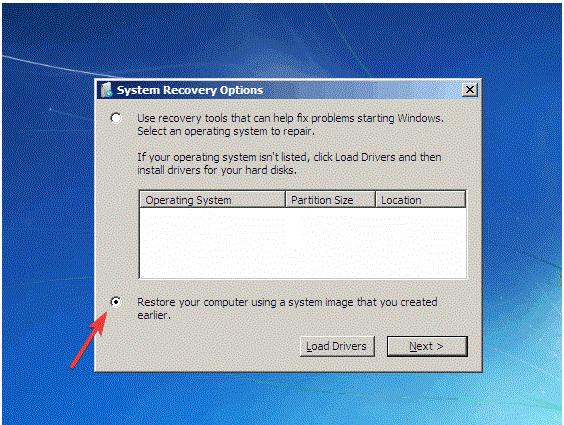
Tips:
However, if your target disk is relatively small, recovery will fail. There are even no backup images available in the re-image your computer window.
Part 4. FAQs About Migrate Windows 7 to SSD
Q1: Do I need to format SSD before installing Windows 7?
If you want to migrate your OS without losing data, there is no need to format your SSD. A third-party software (PassFab 4EasyPartition) is all you need to perform the migration successfully. However, you should format your SSD if you wish to clean install OS on your SSD.
Q2: Why SSD Is Not Recognized by Windows 7?
Please remember, it may not be recognized by Windows 7 due to many reasons. Some of the common reasons include an unexpected configuration method and a bad hardware connection. If the problem still persists, you can try installing SSD on any other PC to diagnose the problem.
Q3: How do I move Windows 7 to an SSD without reinstalling?
You can migrate Windows 7 to an SSD without reinstalling by following the below steps:
1.Connect the SSD to your PC 2.Hit the "Migrate OS to SSD" button 3.Make sure to choose your solid-state drive as the destination disk 4.Lastly, resize the partition on your disk and then move the OS
Conclusion
This article discussed the easiest way to migrate Windows 7 to SSD in just a few clicks. Though Windows 7 comes with its own migration tool, it is always recommended to opt for the best third-party tool like PassFab 4EasyPartition. Users can choose to use the built-in Windows tool, but the process is more complicated. With PassFab 4EasyPartition, you can easily move your Windows 7 to a new disk,This tool can help migrate to SSD Windows 7 without any hassle.
